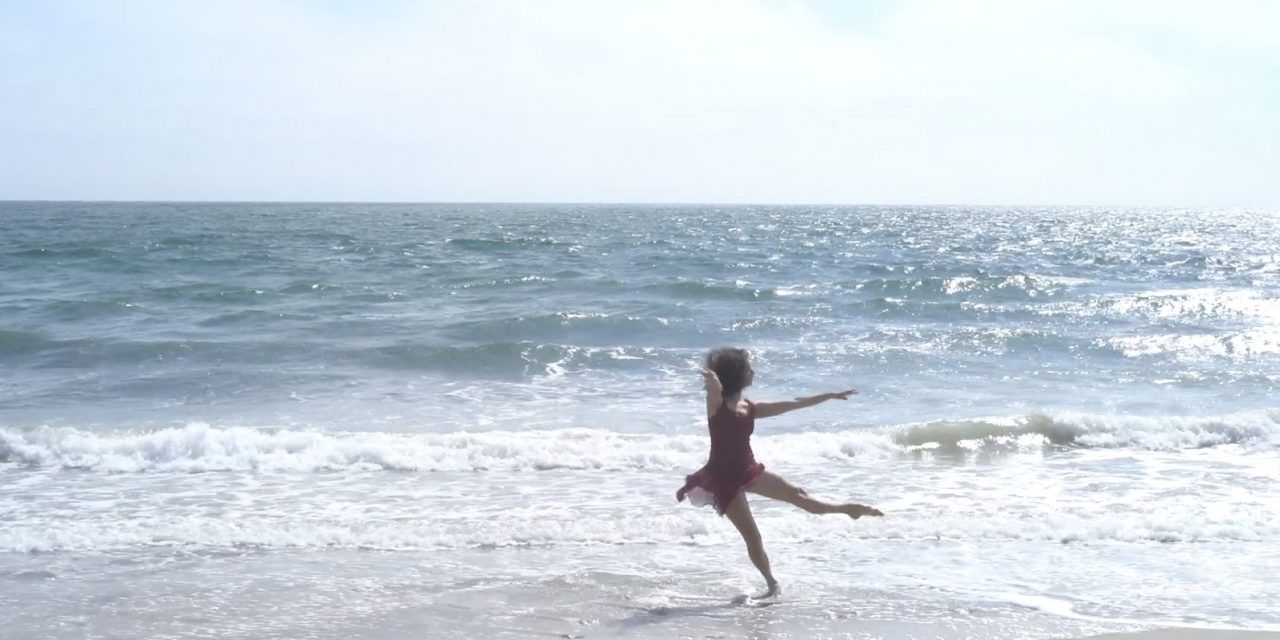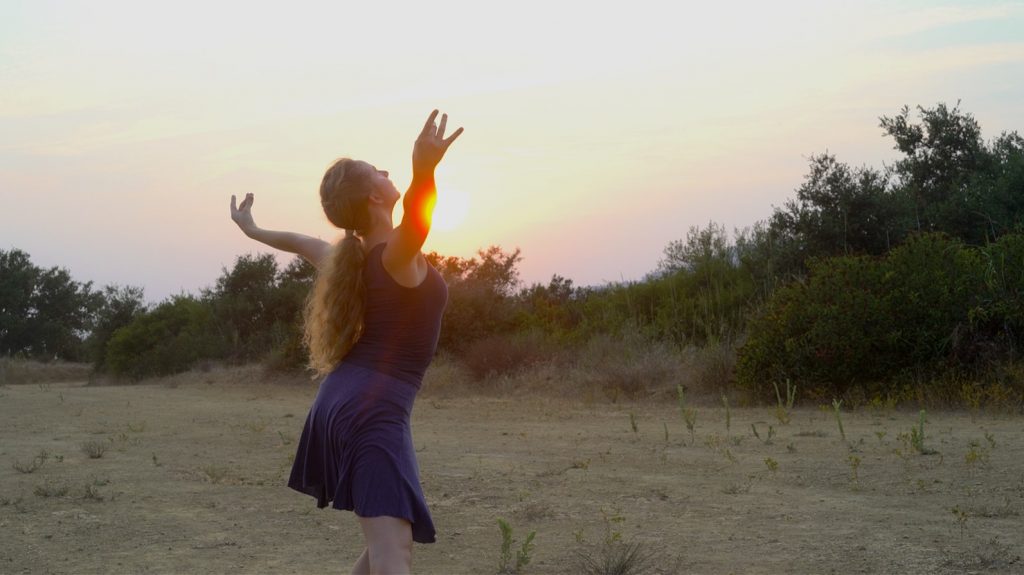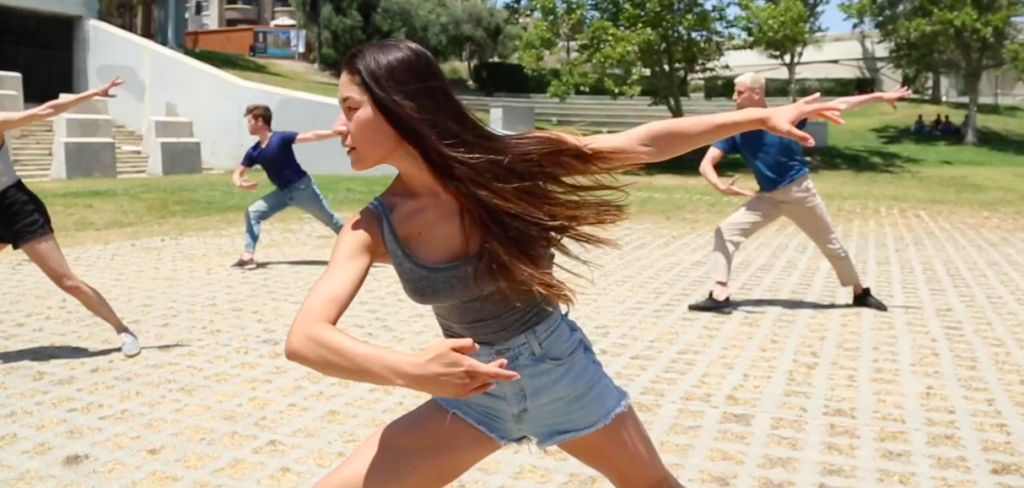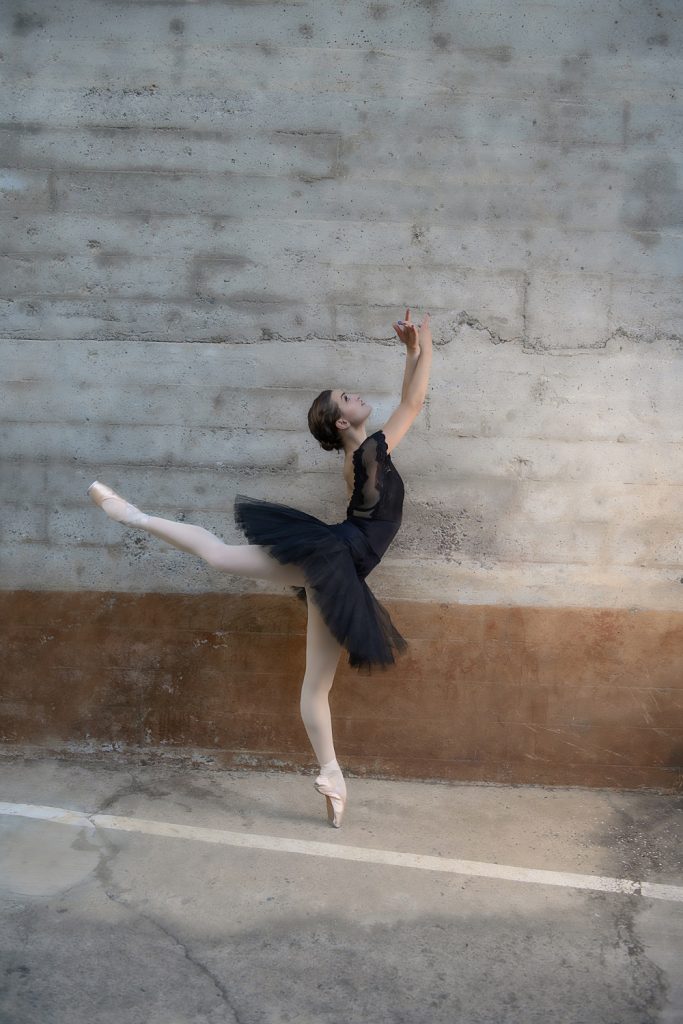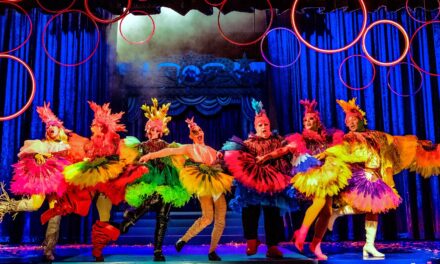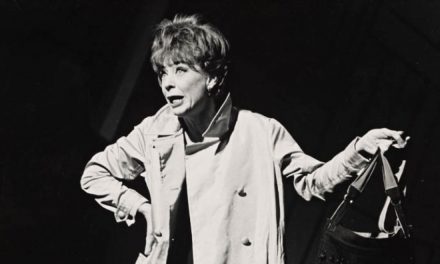On Friday & Saturday October 9th and 10th at 7:30 and 10:00 pm (PDT), Westside Ballet of Santa Monica presents “Grace and Grit” – Dance in the time of Covid, A Drive-In Film Event for Arts Advocacy will be presented at the Santa Monica College Bundy Campus, East Parking lot.
In the midst of a pandemic, Westside Ballet has conjured a remarkable event. A chance to dance, to choreograph and to be creative has always felt essential but never more important nor more difficult than in this time of Covid. Yet Westside Ballet has found a way. By bringing together artists of the highest caliber in an unprecedented film event they are meeting the challenge of keeping dance alive and creating a fundraising platform. Alumni of Westside Ballet have taken part in this film and have graciously agreed to speak with LA Dance Chronicle about the current unprecedented situation and about their experience working on this film.
I was fortunate to interact with Martine Harley, Westside Ballet’s Artistic Director, Choreographer Sophie Monat, Choreographer Melissa Barak of Barak Ballet, Joy Womack, former soloist with The Bolshoi Ballet and currently Artiste with Boston Ballet and Lucia Connolly, from the Joffrey Ballet as well as dancing four seasons with Barak Ballet. Each one of these accomplished women received their early training with Yvonne Mounsey and Rosemary Valaire founders of Westside Ballet and are contributing artists to “Grace and Grit.”
A pandemic, political turmoil and environmental disasters have made this a very difficult time for everyone. Unfortunately the shutdown has had a major impact on the arts community. Dance companies, dance academy’s and studios are among the hardest hit. Yet, those who participated in the making of “Grace and Grit” have found a way to stay focused and to keep creativity alive. Of course virtual dance will never take the place of live performance but it may continue to be relevant as we move through this period to the other side. My questions are based on this idea. These articulate participants answers are down to earth, honest and ultimately inspiring. The future may feel far away just now but rest assured it is in good hands with these intrepid women.
TW – Do you feel this film will make a difference in how future performances and or fundraisers are viewed? Do you see a future in this approach as opposed to or in unison with live presentations?
MH – I sincerely hope that this film is an illustration of what dancers and artists do in the face of adversity. Perhaps it will demonstrate to patrons that dancers’ passion for their craft continues to adapt and grow in a way that inspires everyone. We know people appreciate the arts, and they must support the arts at this crucial time. Dance films have always been around, but live performances are what people crave, from both sides of the stage.
JW – I would hope that this film could be an example of how performances could be presented in the future. I think a large problem for American audiences is the price tag of admission to a theater setting. We need to make Dance more accessible and more inclusive. I think the audience is different than the audience before. People are used to doing more research when investing in experience.
Digital content will help the audience members feel more connected to the performers. I see a future where live performances are broadcasted and backstage interviews are integrated somehow into the experience as well.
LC – I think that because everything has gone virtual during coronavirus, there will absolutely be a shift in how much technology is involved in future dance works and fundraisers. This constraint is pushing many artists to get creative with how their art, in this case dance, is seen and I’m curious to see how this changes dance once we are out of the coronavirus era. I assume that transition to virtual performance, or in part virtual performance, is inevitable at this point.
TW – Please talk a little bit about the actual filming process and how it may have inspired you to look at dance and choreography differently.
MB – As a choreographer, I’ve never really been eager to create dance for film. But after being more or less forced to present dance digitally during Covid, I am now much more open to that creative process. Breathe In was really fun to make. As soon as I scouted the specific architectural locations within Pan Pacific Park, my creative juices started flowing naturally, with ideas on how to connect one scene from the next like you would enjoy a movie. It all came together rather organically, and the dancers I work with just inspire me immensely. I’m now in the middle of creating another made for film “ballet.” This time it will be around 20 minutes and more ambitious production-wise. Breathe In was a way for Barak Ballet to get warmed up as far as film goes — now I’m ready to take it to a new level!
SM – First of all, it was wonderful working with Lucia and Molly again. They are both such beautiful, musical dancers and their enthusiasm made choreographing this film a real joy. Even though we had to do all the rehearsals via zoom, I found the process very inspiring as a choreographer. Working in our separate small home spaces was definitely challenging, and at the same time I think the constraints of working this way actually promoted a wonderful sense of collaboration and pushed us to find creative ways to adapt the choreography from the small spaces we were working in to the larger outdoor spaces where they were filmed.
LC – The filming process made me notice different parts of the movement as the camera focused on different body parts. For instance, when the camera came in for a close up shot of my face and arms, I suddenly became more aware of my fingers and facial expression. This is different from doing a performance on stage where I find my focus is pretty general all over my body. It was fun to draw attention to specific parts of my body; I feel I noticed the movement’s details more as the camera focused on them.
JW – For me the pandemic meant unemployment for over six months. I could not afford to sign another lease in Boston. I was basically a homeless vagabond. I enjoyed the challenge of trying to adapt any space I had for dance and the few times I had an opportunity to use a studio.
I wish I had had more time but I was on a cross-country road trip when I filmed the opening piece for “Grace and Grit” in the salt flats of Utah. I think that dance in general for me has become more flexible in terms of where and how it can be performed. If you love it … you can’t live without it, even if it means doing “barre” in sneakers, in someone’s backyard.
TW – When the pandemic has passed and we have resumed some kind of normalcy, what positive lessons will you take with you into the new future?
LC – I think after coronavirus I will be more grateful for any time I have in a studio. This career is short and having time away made me fully appreciate how special it is to be surrounded by passionate people who are trying to make something beautiful. The energy is inspiring and I miss it!
JW – To never ever take time in the studio or performing for granted…. to pursue art because it is a valuable gift in the midst of a society who doesn’t see its value as essential. To always cherish the range of colors I feel when I’m dancing. Without dance life is still beautiful but it seems to be black and white.
SM – I think everything dancers and choreographers are doing right now to create under these challenging circumstances (making dance films, performing in public outdoor spaces etc.) has really opened up new ways to increase accessibility to dance. When the pandemic has passed and live performance on stage hopefully resumes, I think being able to continue to use these ways to connect, collaborate, and share dance with a much larger community is exciting and something positive we can take with us into the future.
MH – To me, this has been an inspiring time–watching dancers, both students and professionals, continue to find ways to express themselves emotionally and physically through music, as they’ve always done, under the most trying circumstances. To return to the stage will be the reward for that resilience. You cannot quarantine the soul.
TW –With the limitations in this era of Covid, will Westside Ballet be able to present its annual and much beloved “Nutcracker?”
MH – We are just starting to prepare for some semblance of our Nutcracker.
This is our 48th year of bringing this quintessential holiday tradition to our community. It will be unique to assemble as many parts of our production as possible to give our dancers that performance outlet and experience while respecting the current restrictions.
MH – As the saying goes, “the show must go on” and “where there’s a will, there’s a way.”
And that final line sums up the attitude and strength that has propelled Westside Ballet for decades. Indeed, there will be a “Nutcracker” this year and that in itself is reason to celebrate.
******************************
WHO: Westside Ballet
WHAT: “Grace and Grit” – Dance in the time of Covid, A Drive-In Film Event for Arts Advocacy.
WHEN: Friday & Saturday October 9th and 10th at 7:30 and 10:00 pm (PDT).
WHERE: Santa Monica College Bundy Campus, East Parking lot (3171 South Bundy Drive, CA. 90066, in West LA next to the Santa Monica Airport. )
TICKETS, click HERE.
For more information including COVID-19 Safety Guidelines: click HERE.
Written by Tam Warner for LA Dance Chronicle.
Featured image: Lucia Connolly – Photo courtesy of Westside Ballet

